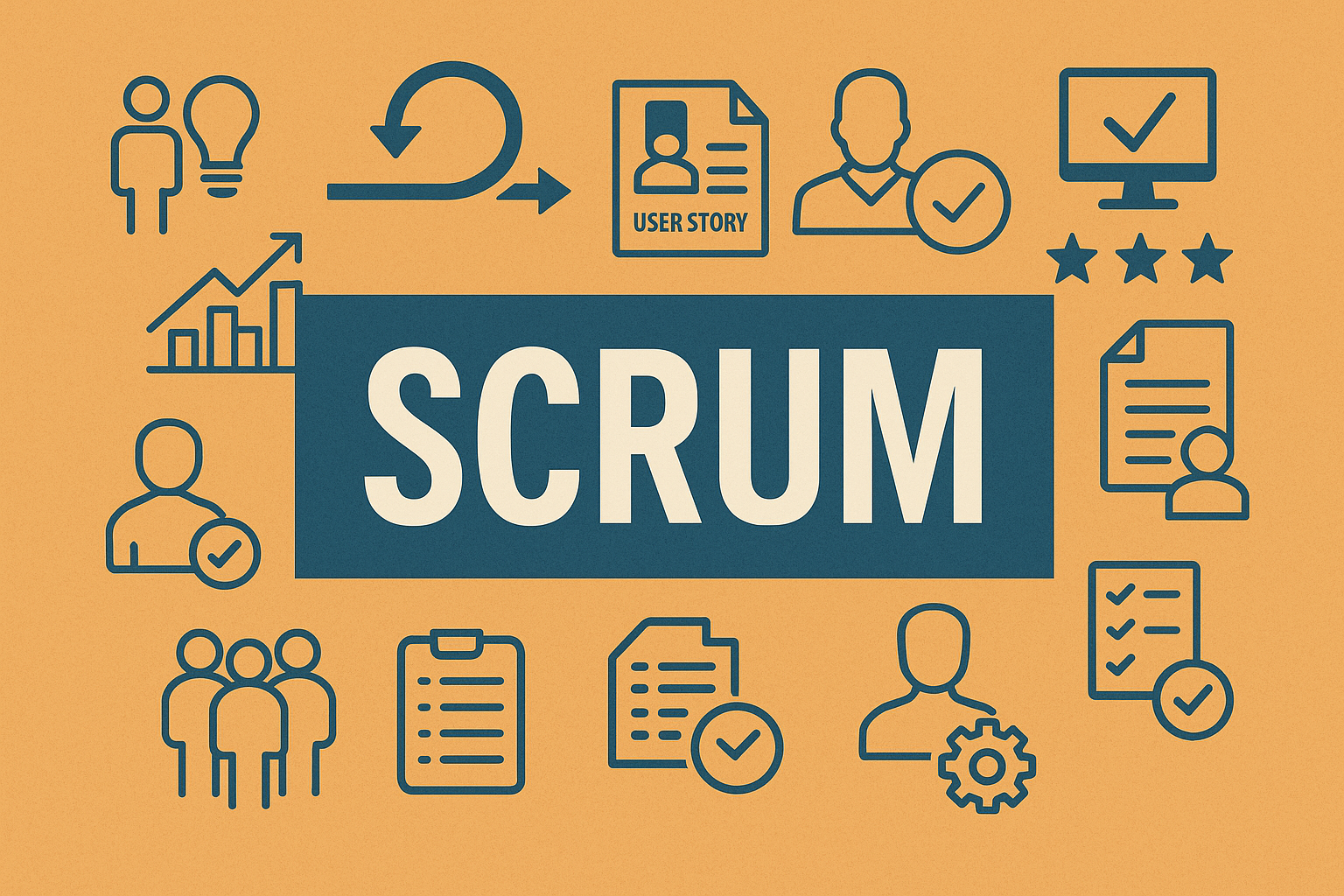Scrum: Roles, Events and Artifacts
Published on April, 2025
Traditionally, the software industry has followed the “waterfall” model of project management, where the entire project is divided into distinct phases: Conception, Initiation, Analysis, Design, Construction, Testing, Production/Implementation, and Maintenance. Each phase begins only after the previous one ends. This model was derived from established industries like construction, where it had been tried and tested.
However, by the mid-90s, it was realized that this model was not suitable for the software industry, where requirements change rapidly. Agile models of project management began to emerge, and Scrum was one of those methodologies. The essence of agile software development lies in providing incremental releases of the product through shorter, iterative cycles.
Let’s explore Scrum in detail:
What is Scrum?
Scrum is an agile project management framework that uses iterative release cycles. In a project following Scrum methodology, there is a fixed-duration release cycle called a Sprint, at the end of which a potentially releasable part of the product is delivered.
The criteria that define whether a product is “potentially releasable” are outlined in the Definition of Done. This definition includes the conditions under which a user story—a statement that describes a product feature—is considered complete and ready for release. The Definition of Done is agreed upon by the Scrum team at the beginning of the project.
A Scrum team consists of members who fulfill three distinct Scrum Roles. These members participate in specific Scrum Ceremonies, which result in the creation of key artifacts at the end of each Sprint.
Scrum Roles
Scrum Master
The Scrum Master is a facilitator who ensures the team has everything needed to work efficiently. They are experts in Scrum and act as a coach, guiding the team in adopting and adhering to Scrum principles. The Scrum Master is responsible for removing impediments that hinder the team’s progress. They also serve as a bridge between the Scrum Team and the Product Owner.
Scrum Team
The Scrum Team is responsible for developing the product increment during each Sprint. The ideal team size is 7 members, plus or minus two. Scrum Teams are flat—there is no hierarchy of leads or senior/junior members. All members are equal and accountable to one another.
Product Owner
The Product Owner represents the client and is often a key stakeholder. They maintain the Product Backlog and Sprint Backlog and ensure the team is working on the highest-value features.
Artifacts
During the Sprint cycle, several artifacts are created and maintained:
- Product Backlog
- Sprint Backlog
- Product Increment
- Burndown Chart
Product Backlog
A prioritized list of features for the product being developed. Each feature is expressed as a User Story on a story card.
User Story
As a <user>, I want <goal> so that <reason>.
Example: As a registered user, I want to log in to the application so that I can view content available only to registered users.
Acceptance Criteria
Defines the conditions that must be met for a story to be considered complete:
- Show an error message when a wrong password is entered.
- Lock the account after 3 unsuccessful login attempts.
- The login screen should be mobile responsive.
Story Point Estimate
Stories are estimated using story points based on the Fibonacci sequence. Large stories are split into smaller, manageable ones.
Estimation Process
Planning Poker is a collaborative estimation technique:
- The Product Owner explains the story.
- Team members independently estimate its size.
- Estimates are revealed and discussed until consensus is reached.
Sprint Backlog
A subset of the Product Backlog selected for the current Sprint based on priority and team velocity.
Product Increment
The deliverable at the end of each Sprint—a potentially shippable part of the product that meets the Definition of Done.
Sprint Ceremonies or Events
Kick-off Meeting
Introduces the team and stakeholders to the Scrum process and sets expectations.
Product Backlog Refinement
Ensures the backlog is ready for the next Sprint by clarifying upcoming stories.
Sprint Planning Meeting
- The Sprint Backlog is created.
- Story points are estimated.
- Complex stories are broken into tasks.
Daily Stand-up
A short (15-minute) daily meeting where each member answers:
- What did I do yesterday?
- What will I do today?
- Are there any impediments?
Guidelines:
- Everyone should be on time.
- Only one person speaks at a time.
- Report to the team, not the Scrum Master.
- Avoid distractions like phones or laptops.
Sprint Review
The team demonstrates the increment to stakeholders and gathers feedback.
Sprint Retrospective
The team reflects on the Sprint:
- What went well?
- What went wrong?
- What can be improved?
